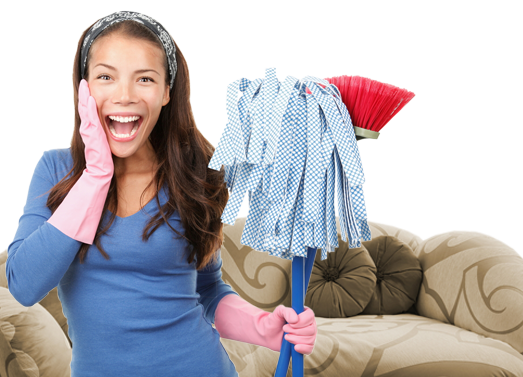Effortless ways to keep your living space dust-free and allergen-free
Posted on 07/06/2025
Effortless Ways to Keep Your Living Space Dust-Free and Allergen-Free
Living in a dust-free and allergen-free home is more than just aesthetically pleasing; it's essential for maintaining good health, especially for those who suffer from allergies, asthma, or other respiratory conditions. But achieving a spotless sanctuary doesn't have to be hard work. By incorporating a few practical habits and smart strategies, you can significantly cut down on dust, pet dander, pollen, and other common household allergens. Read on for some effortless ways to keep your living space dust and allergen-free.
Why Is a Dust-Free and Allergen-Free Home Important?
Dust isn't just a nuisance; it contains microscopic particles of dead skin, fibers, pollen, pet dander, mold spores, and even bacteria. Prolonged exposure to these elements may trigger allergies, worsen asthma symptoms, and impact overall well-being. Having an allergen-free living space improves indoor air quality, reduces the need for medication, and contributes to a healthier and more comfortable environment.
Key benefits of a dust-free, allergen-free home:
- Improved respiratory health
- Better sleep quality
- Fewer allergy symptoms
- Longer-lasting furniture and electronics
- A more inviting and comfortable living environment

1. Declutter to Combat Dust and Allergens
Clutter attracts dust. Piles of paper, stacked books, unused clothes, and random objects create perfect hiding places for dust mites and allergens. Start by streamlining your living space:
- Donate items you no longer use or need
- Store essentials in sealed containers
- Adopt a minimalist approach to decor
- Keep countertops and flat surfaces clear
The fewer items you have exposed, the less surface area for dust to settle. Decluttering might seem like a big job, but just 10 minutes a day can make a dramatic difference in keeping your home dust-free.
2. Clean Smart, Not Hard
You don't need to spend hours scrubbing every corner. Instead, adopt these effortless cleaning habits:
- Use microfiber cloths: These trap dust instead of spreading it around.
- Wipe surfaces weekly: Regular quick wipe-downs prevent buildup.
- Work from top to bottom: Dust falls, so always start high (shelves, tops of cabinets) and end with floors.
For those with time constraints, focus on high-traffic areas and spots where dust accumulates fastest, like TV stands, window sills, and baseboards.
3. Vacuum Regularly--and Use the Right Vacuum
A HEPA-filter vacuum is a must for truly keeping your living area as dust- and allergen-free as possible. The HEPA filter traps microscopic particles that standard vacuums can stir back into the air.
- Vacuum carpets and rugs at least twice weekly
- Don't forget to vacuum upholstered furniture and drapes
- Empty the vacuum canister/bin outdoors to avoid releasing dust inside
For pet owners, consider a vacuum specifically designed to tackle pet hair and dander.
4. Ditch Carpets for Easy-Clean Flooring
Carpets are magnets for dust, pollen, and dander. If possible, switch to hard flooring like wood, tile, or laminate. These surfaces are easy to sweep or mop and don't harbor allergens.
- Use washable area rugs that can be cleaned frequently
- If you must have carpet, opt for low-pile options and clean them often
5. Improve Indoor Air Quality
Air quality is fundamental to maintaining an allergen-free environment. Here's how to enhance your home's air:
- Use an air purifier: Choose one with a true HEPA filter for maximum effectiveness
- Change HVAC filters regularly: Replace or clean filters every 2-3 months, or more often if you have pets
- Keep windows closed during high pollen seasons: This keeps outdoor allergens from entering your home
- Ventilate your rooms: Occasionally open windows on low-pollen, low-smog days to let in fresh air
A good air purifier can dramatically reduce dust, pollen, mold spores, and even odors--helping you keep your living space dust and allergen-free with minimal effort.
6. Enforce a "No Shoes Indoors" Policy
Shoes track in dirt, pesticides, bacteria, and allergens from the street. By simply asking everyone to remove their shoes at the door, you prevent much of that outdoor debris from entering your home.
- Place a mat both outside and inside each entrance
- Provide slippers or indoor shoes for comfort
- Store outdoor shoes in a closed cabinet or rack by the door
7. Wash Bedding and Fabrics Routinely
Your bed is a prime breeding ground for dust mites and allergens. It's crucial to wash all bedding frequently and properly:
- Wash sheets, pillowcases, and blankets in hot water (at least 130?F/54?C) weekly
- Use hypoallergenic and dust-mite-proof covers on pillows and mattresses
- Don't forget to wash curtains, throw pillows, and washable pet bedding regularly
These simple habits keep allergens at bay and create a healthier sleeping environment.
8. Keep Pets Clean & Groomed
Pet dander is one of the most common indoor allergens. Even if your pets don't shed much, their fur and skin can introduce dust and pollen into your home:
- Bathe and brush pets regularly (outdoors or in an easy-to-clean area)
- Wipe their paws and fur after they've been outside
- Keep pets out of bedrooms if you suffer from allergies
9. Minimize Soft Furnishings
Upholstered furniture, drapes, and fabric lampshades tend to collect more dust than hard materials. Opt for leather, vinyl, or wood furniture where possible. If you like throw pillows and soft accessories, choose covers that are easily machine washable.
10. Control Humidity to Prevent Allergen Growth
Dust mites and mold thrive in humid environments. To keep your home dust and allergen-free, maintain optimal humidity levels (ideally between 30% and 50%):
- Use a dehumidifier in damp areas like basements
- Run exhaust fans when cooking or showering
- Fix leaky pipes promptly
- Vent clothes dryers outside
Use a humidity monitor or hygrometer to keep track of levels and adjust as needed.
11. Invest in Hypoallergenic Decor and Materials
Look for hypoallergenic bedding, curtains, and even paint to reduce sensitivity to airborne particles. Avoid wall-to-wall carpets, heavy drapes, and textured surfaces that trap dust.
12. Regularly Clean Vents, Fans, and Filters
Dust hides in less visible spots too. Often, air vents, ceiling fans, and air conditioner filters go untouched for months, becoming hidden sources of dust and allergens.
- Clean or replace filters according to manufacturer's instructions
- Dust fan blades and vent covers monthly
13. Address Mold Issues Promptly
Mold spores are a potent allergen. If you notice musty odors, damp spots, or visible mold, address the issue quickly:
- Clean small spots of mold with a mixture of detergent and water
- For large infestations, seek professional help
- Address the underlying moisture source--leaks, standing water, or poor ventilation
14. Use Allergen-Reducing Cleaning Products
Many conventional cleaning products contain harsh chemicals that can irritate the lungs and skin. Instead, use gentle, allergy-friendly cleaners and avoid products with strong fragrances or volatile organic compounds (VOCs).
- Look for eco-friendly, non-toxic cleaning sprays
- Try homemade vinegar and baking soda solutions for dusting and freshening
15. Seasonal Tips for Keeping Your Home Dust- and Allergen-Free
Allergens change with the seasons. Here's how to adapt your strategy throughout the year:
- Spring/Summer: Keep windows closed on high-pollen days; wash window screens; clean air conditioner units
- Fall: Clean up fallen leaves and outdoor debris promptly; check for mold in damp corners
- Winter: Humidify the air, but don't let it get too moist; regularly clean heating vents and radiators

Effortless Maintenance: Building Habits for a Dust-Free, Allergen-Free Home
The most important secret to keeping your living environment clean and healthy is consistency. Small, regular actions are far more effective (and less exhausting) than huge, sporadic cleaning sprees.
- Spend just 10-15 minutes a day on tidying up
- Set reminders to wash bedding and clean key areas weekly
- Quickly wipe surfaces and sweep or vacuum high-traffic spots
Quick Reference: Effortless Ways to a Dust-Free Home
- Declutter your space
- Use microfiber dusters and cloths
- Vacuum frequently with a HEPA-filter machine
- Launder soft furnishings regularly
- No shoes inside
- Keep humidity under control
- Clean air vents and replace filters
- Groom pets often
- Choose easy-clean furniture and surfaces
Conclusion: Your Roadmap to Effortlessly Allergen-Free Living
Transforming your home into a dust-free, allergen-free living space doesn't have to be a never-ending battle. With the right tools, smart daily habits, and a focus on prevention, you can enjoy a cleaner, healthier, and more welcoming environment with minimal effort.
Implement these simple strategies today, and breathe easier knowing that your home is truly a safe haven for you and your loved ones. Effortless dust and allergen control is not just possible--it's within your reach!



